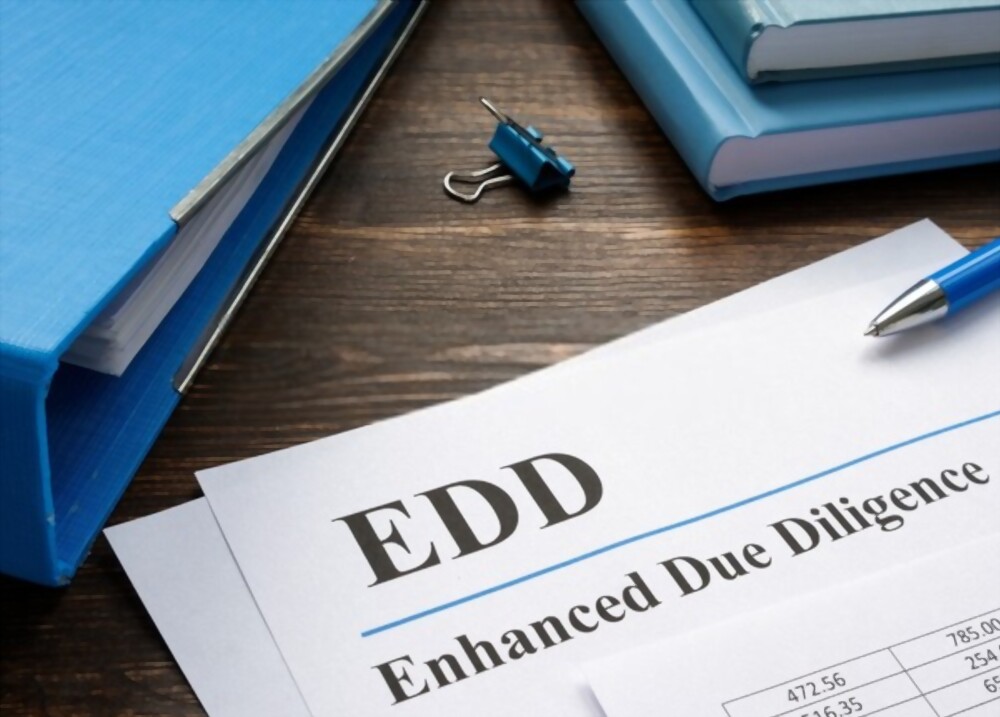In today’s fast-paced world with evolutionary business architecture, every small and large company ensures to develop as secure an environment as possible. However, these innovative technologies not only help businesses grow but also become useful for criminals to commit fraud. That is why almost every firm has to take preventive measures while onboarding a new client to avoid risks in the future.
That is when customer due diligence and enhanced due diligence processes take place. Businesses implement enhanced due diligence checklists on customers who are potent to have high-risk levels. But how is this process different from customer due diligence and how do companies conduct this procedure to verify new users before employing them?
In this blog, we’ve got all your answers to help you understand the complete EDD procedure in KYC.
What is Enhanced Due Diligence?
Enhanced due diligence or EDD is a more in-depth or extensive process of conducting further analysis and evaluations about the customer who is recognised to have higher levels of risks such as financial crimes, money laundering, corruption, or terrorist funding.
The objective of EDD is to make sure that the company gains complete knowledge about the potential risks associated with the customer before building new relationships with them. In addition to this, the purpose of integrating an enhanced due diligence checklist is to identify and mitigate these risks. Through this, companies can take appropriate measures to prevent money laundering and other potential threats.
The EDD process is conducted by collecting further information about the user such as transaction history and financial background. This data may also include verifying a client’s identity, running background checks, keeping track of transaction patterns, and monitoring business activities.
How is EDD Different from CDD?
When it comes to CDD vs EDD, the two processes are two different approaches that are used to conduct due diligence. Although both procedures are used to analyse and manage risks associated with the entity that the business is going to connect with.
Well, customer due diligence or CDD is the basic process that involves gathering of customer’s basic information such as user identity, sources of wealth, and address. The purpose of CDd is to develop an understanding of the client’s identification and recognise their risk levels. It helps businesses make sure that the client is not involved in any illegal activity.
On the other hand, enhanced due diligence or EDD is a more extensive or further process that goes beyond customer due diligence. As compared to CDD, which is applicable to all new customers, EDD is only applied to customers who are identified to be high-risk such as politically exposed persons or their relatives.
The purpose of both CDD and EDD is to recognise and minimise risks to prevent businesses from potential financial loss in the future.
Who Requires Enhanced Due Diligence?
Essentially, an enhanced due diligence checklist can be conducted by any business that is associated with financial and economic industries. This process can be conducted on the following bodies:
- Blacklisted companies
- Banking firms
- Companies in high-risk countries
- High-risk businesses such as gambling or online gaming
- Politically exposed persons
- Terrorist funding agencies
- Ultimate beneficial owners
How do Organisations Conduct Enhanced Due Diligence?
Enhanced due diligence is conducted by collecting and verifying customer information and various documents. Companies usually execute this process in five basic steps that are mentioned below:
i. Identification of High-Risk Customer
Well, this step comes before practically applying the EDD process. In this phase, businesses identify high-risk customers that need to be investigated further. This process is based on factors such as their sources of funds, business activities, and transactional patterns.
ii. Gathering of User Information
When a high-risk customer is identified through numerous signs such as suspicious transactions, the next step is collecting further information. This data may include bank statements, running background checks, reviewing public records, and verifying other information.
iii. Conducting Risk Scoring
Once all the required information is gathered by the company conducting an enhanced due diligence checklist, they conduct a risk scoring process. This procedure involves analysing the collected data and evaluating the risk level associated with the customer.
iv. Developing Risk Mitigation Approach
As per the results of the risk scoring process, these companies implement particular strategies and approaches to mitigate the risk and minimise the potential threats to the customer and the company. This step of the enhanced due diligence checklist involves the implementation of ongoing monitoring, setting transaction limitations, and collecting further information.
v. Continuous Monitoring
The last step is ongoing monitoring of customer behavioural and transactional patterns to identify if any modifications have occurred in the customer profile. It also helps businesses keep acknowledging that the customer is not engaged in any illicit activity.
Conclusion
With the rise of financial crimes, the need of implementing an enhanced due diligence checklist has become essential for every business. Since it helps companies to identify and monitor high-risk customers to prevent their businesses from getting involved in any kind of fraud. EDD also aids firms to reduce financial crime by investigating suspicious transactions and minimise the potential risk.





